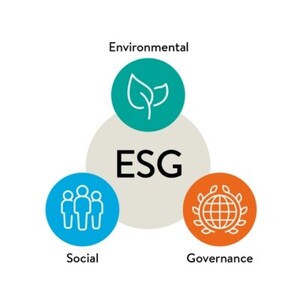A review by Sagi S, et al. highlighted that biological medicines are well established in clinical practice for the treatment of many serious and chronic conditions [1].
As healthcare expenditure for biological therapies has increased in recent years, biosimilar medicines have been introduced to provide increased access to these therapies and to support the long-term sustainability of healthcare systems [2]. A biosimilar is a biological medicine that has been approved according to the same standards of pharmaceutical product quality as its reference biologic [an already approved biological medicine that shares the same international nonproprietary name (INN)], for which the patent and/or data protection periods have expired [1]. They are shown to provide equivalent efficacy and comparable safety and immunogenicity [3].
Despite the many published data demonstrating the efficacy and safety of biosimilars, there are still lingering concerns of some healthcare professionals (HCPs), patients, and policy experts about the long-term safety of biosimilars. The study suggests that the best way to allay these concerns is by providing detailed and extensive long-term real-world safety data of marketed biosimilars. Therefore, the publication summarizes available cumulative real-world safety data and is one of the largest analysis post-approval biosimilar safety experience available to date.
The authors employed post-approval cumulative patient exposure data for the eight marketed Sandoz biosimilars (adalimumab, epoetin alfa, etanercept, filgrastim, infliximab, pegfilgrastim, rituximab, and somatropin) were calculated based on data available in the most recent Periodic Safety Update Reports (PSURs) (cut-off date 31 January 2023). The cumulative post-approval exposure in each PSUR range from the date of marketing authorization to the data lock point of the most recent PSUR. The review paper discusses the safety experience (cumulative safety data, summary of safety concerns, evaluation of risks, and new information) was summarized based on information contained in the latest Health Authority (HA)-approved respective PSURs available as of 31 January 2023, and the available HA PSUR assessment reports [e.g. as issued by the EMA Pharmacovigilance Risk Assessment Committee (PRAC) for EU PSURs]. The review paper includes relevant new safety information from respective PSURs related to safety signals, risk management plan (RMP) risks, safety label changes, or from registries, was included for each Sandoz biosimilar.
The review provides evidence that up to 18 years of real-world experience demonstrated that all eight Sandoz biosimilars are as safe as their respective reference biologics. No new or changing safety findings or risks were detected. The estimated post-approval cumulative exposure for adalimumab, epoetin alfa, etanercept, filgrastim, infliximab, pegfilgrastim and somatropin combined is over 1.3 billion patient treatment. The estimated post-approval cumulative exposure for rituximab is over 1.8 million patient doses. Given that Sandoz biosimilars are marketed in up to 90 different countries, the analysed pharmacovigilance data reflect a diverse patient population.
The authors concluded that the long-term safety of biosimilars demonstrated here provides strong support for the concept of biosimilarity. The findings suggest that since biosimilars provide the same efficacy and long-term safety as their reference biologics, more extensive utilization of biosimilars can increase patient access and can ameliorate the financial burden on healthcare systems.
Conflict of interest
The authors of the research paper [1] reported the following conflict of interest:
SS and AK are employees of Sandoz International GmbH. PA is an employee of Novartis Healthcare Pvt Ltd. SK is an employee of Sandoz Pvt Ltd. HPC is an employee of Sandoz Inc.
Abstracted by Dr Sreedhar Sagi, Head, Medical Affairs, Sandoz International Region, 18 Industriestrasse, DE-83607, Holzkirchen, Germany.
Editor’s comment
Readers interested to learn more about biosimilarity are invited to visit www.gabi-journal.net to view the following manuscript published in GaBI Journal:
Biosimilarity is not a transitive property: implication for interchangeability, naming and pharmacovigilance
GaBI Journal is indexed in Embase, Scopus, Emerging Sources Citation Index and more.
Readers interested in contributing a research or perspective paper to GaBI Journal – an independent, peer reviewed academic journal – please send us your submission here.
GaBI Journal Citation Impact
1.8 – CiteScore 2023 (calculated on 5 May 2024)
0.9 – CiteScoreTracker 2024 (Last updated on 8 July 2024)
Submit a manuscript to GaBI Journal
Related articles
Switches between biosimilars and their reference products
Four steps for streamlining biosimilars development
References
1. European Medicines Agency. Biosimilars in the EU. Information guide for healthcare professionals. Prepared jointly by the European Medicines Agency and the European Commission. Biosimilars in the EU – Information guide for healthcare professionals [homepage on the Internet]. [cited 2024 Sep 24]. Available from: https://www.ema.europa.eu/en/documents/leaflet/biosimilars-eu-information-guide-healthcare-professionals_en.pdf
2. European Commission. Eurostat, statistics explained. Healthcare expenditure statistics - statistics explained [homepage on the Internet]. [cited 2024 Sep 24]. Available from: https://ec.europa.eu/eurostat/statistics-explained/index.php?title=Healthcare_expenditure_statistics&oldid=598806
3. U.S. Food & Drug Administration. Biosimilar and interchangeable biologics: more treatment choices [homepage on the Internet]. [cited 2024 Sep 24]. Available from: https://www.fda.gov/consumers/consumer-updates/biosimilar-and-interchangeable biologics-more- treatment-choices
Permission granted to reproduce for personal and non-commercial use only. All other reproduction, copy or reprinting of all or part of any ‘Content’ found on this website is strictly prohibited without the prior consent of the publisher. Contact the publisher to obtain permission before redistributing.
Copyright – Unless otherwise stated all contents of this website are © 2024 Pro Pharma Communications International. All Rights Reserved.








 0
0











Post your comment